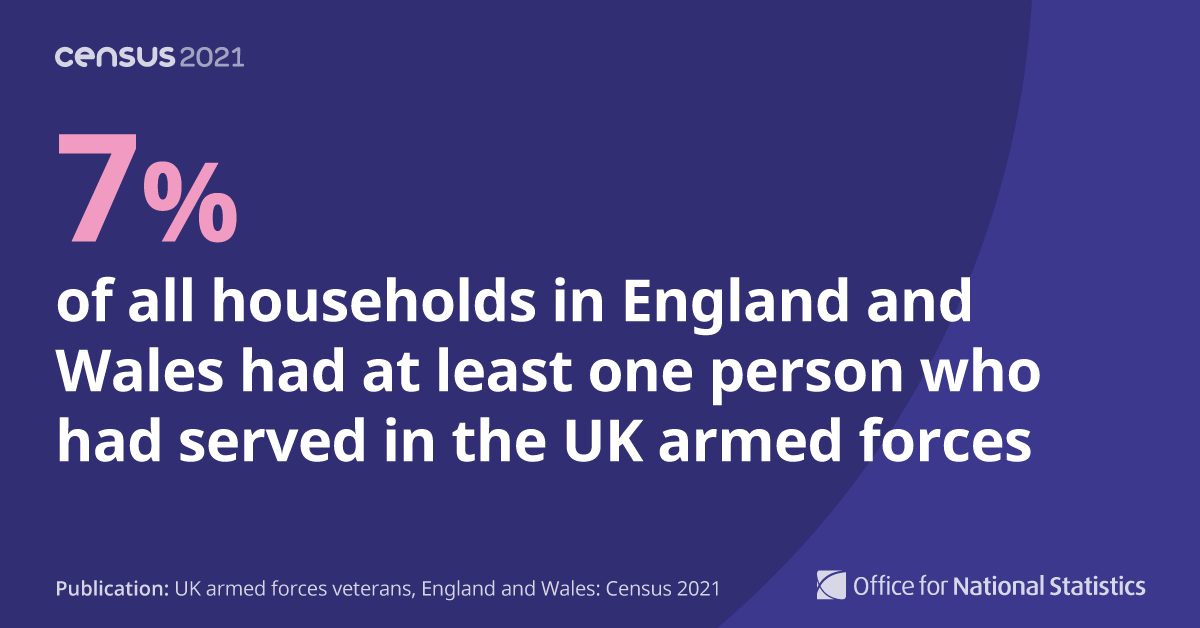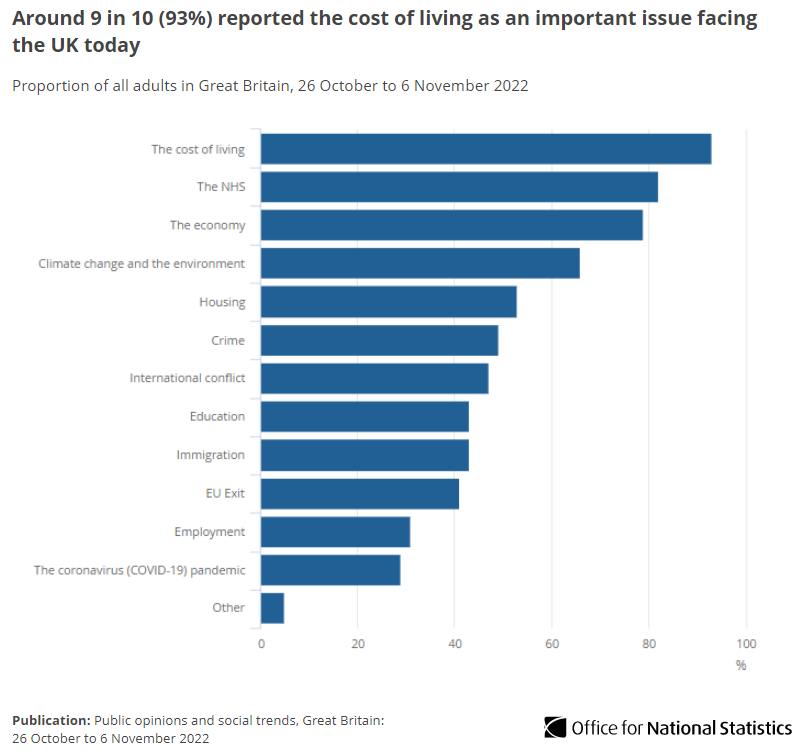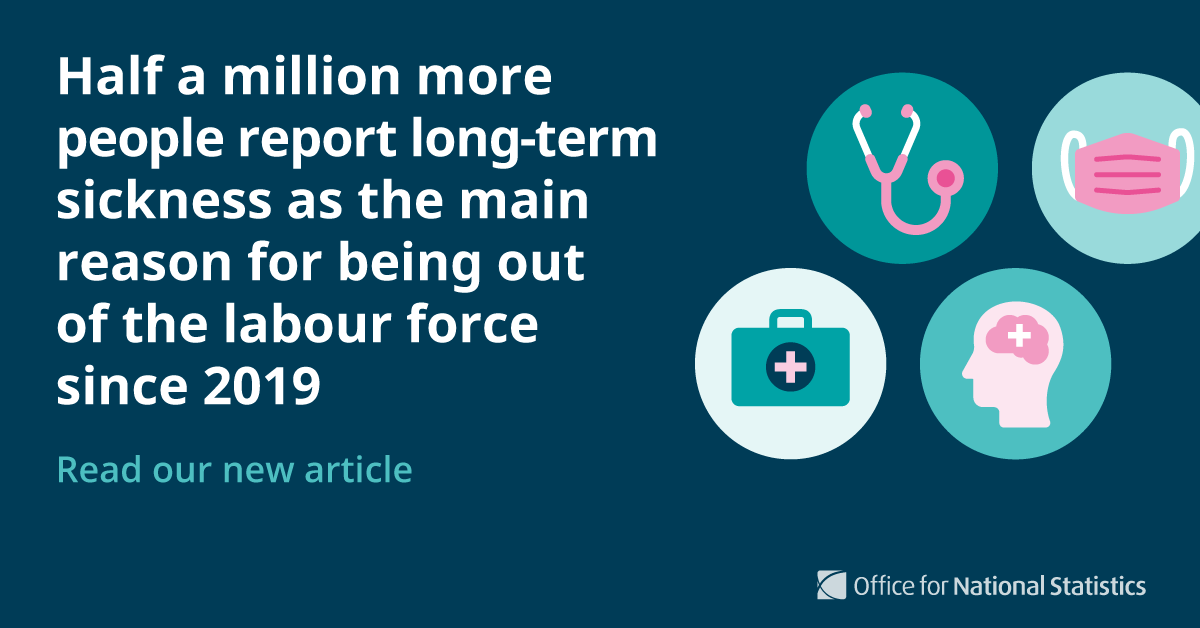
For the first time, we’ve collected #Census2021 information on the veteran population.
1,853,112 people in England and Wales said they had previously served in the UK armed forces (3.8% of usual residents aged 16 years and over).
➡️ ow.ly/SGlG50LzB0n
1,853,112 people in England and Wales said they had previously served in the UK armed forces (3.8% of usual residents aged 16 years and over).
➡️ ow.ly/SGlG50LzB0n

Of the UK armed forces veterans in England and Wales:
▪️ 1.4 million people previously served in the regular forces
▪️ 361,000 people in the reserve forces
▪️ 79,000 people served in both the regular and reserve forces
▪️ 1.4 million people previously served in the regular forces
▪️ 361,000 people in the reserve forces
▪️ 79,000 people served in both the regular and reserve forces

Just over 1.8 million (98.0%) veterans lived in households, while 37,000 (2.0%) lived in communal establishments.
This is similar to the population as a whole - 98.3% of usual residents in England and Wales live in households and 1.7% live in communal establishments.
This is similar to the population as a whole - 98.3% of usual residents in England and Wales live in households and 1.7% live in communal establishments.
1.7 million households (7.0%) in England and Wales had at least one person who had previously served in the UK armed forces.
Of these households:
▪️ 96% included only one veteran
▪️ 3.9% included two veterans
▪️ 0.1% had three or more veterans
Of these households:
▪️ 96% included only one veteran
▪️ 3.9% included two veterans
▪️ 0.1% had three or more veterans

The proportion of UK armed forces veterans (aged 16 years and over) was higher in Wales (4.5% of the population, 115,000) than it was in England (3.8%, 1.7 million). 

Correction: In England, the regions with the highest proportion of veterans are:
▪️ South West (5.6%, 265,000 people)
▪️ North East (5.0%, 109,000 people)
London had the lowest proportion of UK armed forces veterans (1.4%, 101,000 people).
➡️ ow.ly/rVse50LAXtp
▪️ South West (5.6%, 265,000 people)
▪️ North East (5.0%, 109,000 people)
London had the lowest proportion of UK armed forces veterans (1.4%, 101,000 people).
➡️ ow.ly/rVse50LAXtp
• • •
Missing some Tweet in this thread? You can try to
force a refresh

















